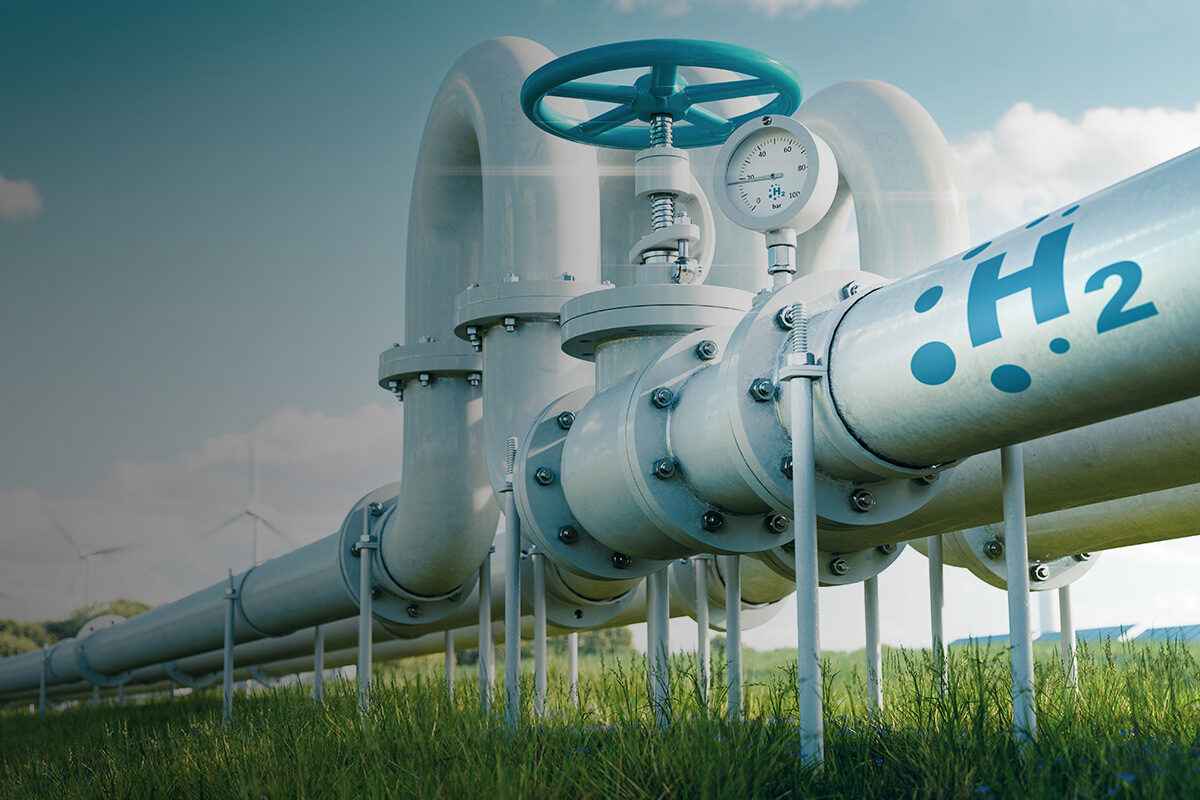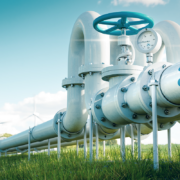
Green Hydrogen Will Unlock New, Scalable Opportunities in Clean Energy
As Europe scales up production and import of green hydrogen, how can the industry mobilize capital to deliver bigger projects? Laurent Dallet, Managing Director at Nomura Greentech, discusses the increasing competition in the green hydrogen space.
- The global hydrogen generation market was valued at $155 billion in 2022, and is forecast to grow at a compound annual growth rate of 9.3% from 2023 to 2030
- Commercial banks are getting more active, pitching debt advisory, and more willing to allocate their balance sheets to green hydrogen projects
- Dallet cites the Iberian peninsula, Denmark and Germany as the fastest moving markets in Europe
Green hydrogen has a critical role to play in solving the energy transition puzzle, cutting emissions in carbon-intensive industries and driving new industrial products; providing alternative fuel sources for transport; and contributing to a larger share of the energy mix.
The global hydrogen generation market was valued at $155 billion in 2022, and is forecast to grow at a compound annual growth rate of 9.3% from 2023 to 2030. The vast majority of today’s hydrogen is grey, produced from natural gas at a typical cost of under €2 per kilogram. Green hydrogen is produced from renewables, using a method known as electrolysis, which separates hydrogen from oxygen in water.
The IEA estimates the global share of green hydrogen at around 0.04%, produced at significantly higher cost, even for those with abundant renewable resources, highlighting the scale of transformation (and investment) required for green hydrogen to become a serious part of the energy mix.
But significant opportunities do exist. Production costs are falling fast. Through tax incentives and $9.5 billion in grants, the Biden administration’s Inflation Reduction Act aims to drive down the domestic cost of green hydrogen to a quarter of current levels in less than a decade. Over 1,000 hydrogen projects are under way worldwide, according to figures from McKinsey, with more than 350 announced in the past year alone.
The EU has set a target of producing 10 million tonnes of renewable hydrogen domestically, and importing the equivalent amount again, by 2030. The scaling up of European production capabilities over that time is estimated to require total investment of €335-471 billion, including the €200-300 billion needed for additional renewable energy production. The vast majority has to come from private funding. Bridging that funding gap is a challenge that must be overcome at speed.
“Until recently, we have seen investment banks generally keeping their distance,” Laurent Dallet, managing director at Nomura Greentech, says of the green hydrogen space. “But things are changing quickly, we see more competition and a lot of capital being made available. Commercial banks are getting more active, pitching debt advisory, and also becoming more willing to allocate their balance sheets to projects.”
Nomura has been at the forefront of driving such activity, with Dallet, who leads the company’s European low carbon infrastructure and low carbon molecules sector, acknowledging that significant work still needs to be done to bring sufficient capital into the market to make these 2030 goals achievable.
“Europe is already late on the target,” he explains. “For new projects going through permitting now, you’re looking at a final investment decision over the next two to three years. That already brings us up to 2026. Then you need to actually build the assets – another few years – meaning you won’t actually see the electrons and molecules being produced until 2027 or 2028 at the earliest.”
Dallet puts these delays in Europe down to three inter-related concerns surrounding what is already a very complex space: a talent shortage, a lack of technology readiness, and overly stringent regulations. Green hydrogen production is far closer in its DNA to the oil and gas industry than the renewables sector, meaning it is not simply a case of plugging into the knowledge base Europe has developed in wind and solar over recent decades. The challenge is marrying both elements, a challenge the Nomura Greentech MD acknowledges remains in its infancy, especially with fossil fuel giants still seemingly hesitant when it comes to entering into green hydrogen projects.
A lack of volume in available electrolyser technology is also an issue, coupled with the fact that said technology is advancing at such a rate that today’s tech may relatively quickly become obsolete.
But these two challenges are being faced the world over. Europe’s unique challenges are, to a great extent, self-inflicted and come down to what can actually be defined as “green” hydrogen.
To secure the green designation, and benefit from Article 9 funding under the EU’s Sustainable Finance Disclosure Regulations, hydrogen factories must sign power-supply contracts with relatively new renewable power projects—no older than three years—located in the same or an adjoining region of Europe’s electricity market. They must also show that the total quantity of renewable hydrogen produced and clean electricity consumed are aligned over a period of 30 days, even if the quantities of wind and solar power fluctuate day-to-day with the elements.
“It is a very technocratic way of defining green hydrogen, which adds a level of complexity not faced elsewhere and causes substantial delays in the realisation of projects,” says Dallet. “The money required is not necessarily to build the plant, but to develop it and there’s a risk the project will never see the light of day. It’s the type of risk profile more often associated with venture capital, but at levels not typically available from such sources.”
In an effort to build trust and support, earlier this year the EU announced the formation of the European Hydrogen Bank (EHB), established as a major funding scheme to ramp up the hydrogen value chain. The EHB is seen as a market-making tool supporting both the domestic production and consumption of renewable and low-carbon hydrogen and the import of hydrogen and its derivatives, including the provision of guarantees to commercial banks.
Dallet calls this a “game changer” in terms of building trust and accelerating the direction of travel, but real momentum can only come through the setting of precedent and clear demonstration to the market of the benefits of bringing the various parties and capital formation together to make such projects a reality. “How do you help people believe in this story?” he asks. “There are no benchmarks or historical transactions. Typically, investment banks only really enter when there is a strong track record.”
To this end, Dallet speaks of the need for institutions such as Nomura Greentech to serve as advocates for the green hydrogen space, particularly as the sense of urgency surrounding energy independence dissipates, oil and gas prices return towards normalcy, and this once again becomes a pure net zero play.
One recent example of a successful financing saw Nomura Greentech acting as exclusive financial adviser to Germany’s Hy2gen, which develops, finances, builds and operates plants for the production of green hydrogen and hydrogen-based e-fuels worldwide, in its raising of a €200 million investment round, one of the largest private green hydrogen-focused capital raise to date.
“We brought in Hy24, the largest clean hydrogen fund in the world; [Natixis Investment Managers sustainable investment affiliate] Mirova; Canadian sovereign Wealth Fund CDPQ, and industrials players,” explains Dallet. “Technip Energies is an engineering firm from the oil and gas sector that has decided to invest because they see this as a business opportunity – and understands the benefits of being a leader in this space.
“This transaction has been extremely accretive for us in terms of securing an additional mandate, demonstrating what is possible, and opening the door to capital raising in similar situations.”
Indeed, this month, Nomura Greentech closed another similar deal, when it advised Elyse Energy on its capital raise by H2Scale - a joint venture between Hy24 and Mirova - to develop low carbon sustainable aviation fuel (SAF) projects in France and Spain.
The company’s portfolio of projects in development will deploy nearly 2.5GW of installed capacity that could produce more than one million tonnes of e-methanol and 200,000 tonnes of SAFs annually from 2027.
They are likely to be the first of many. If European targets are to be met, financing cannot be limited to projects inside the EU.
Dallet cites the Iberian peninsula, Denmark and Germany as the fastest moving markets in Europe. However, in order for green hydrogen targets to be met, significant scaling up of infrastructure will be required beyond the continent’s borders, particularly in North Africa and the Middle East, locations with access to the sea, requisite land, and significant renewable energy sources.
“It’s about finding markets that have the right conditions, and where investors can feel comfortable putting their money in,” Dallet explains. “We cannot be dependent on OECD countries alone if we are to get close to total needs.”
Again, this speaks to both the huge potential, and the inherent challenges of sourcing the financing to unlock big projects as it is difficult to see a pathway to limiting global warming to 1.5 degrees that does not make significant use of green hydrogen. With that kind of incentive, early movers have a great opportunity to define the ecosystem and accelerate progress towards a world of clean energy.
This article was first published by Capital Monitor.
Contributor

Laurent Dallet
Managing Director - Nomura Greentech
Disclaimer
This content has been prepared by Nomura solely for information purposes, and is not an offer to buy or sell or provide (as the case may be) or a solicitation of an offer to buy or sell or enter into any agreement with respect to any security, product, service (including but not limited to investment advisory services) or investment. The opinions expressed in the content do not constitute investment advice and independent advice should be sought where appropriate.The content contains general information only and does not take into account the individual objectives, financial situation or needs of a person. All information, opinions and estimates expressed in the content are current as of the date of publication, are subject to change without notice, and may become outdated over time. To the extent that any materials or investment services on or referred to in the content are construed to be regulated activities under the local laws of any jurisdiction and are made available to persons resident in such jurisdiction, they shall only be made available through appropriately licenced Nomura entities in that jurisdiction or otherwise through Nomura entities that are exempt from applicable licensing and regulatory requirements in that jurisdiction. For more information please go to https://www.nomuraholdings.com/policy/terms.html.



